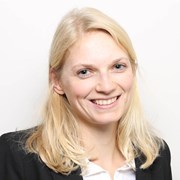The cost of the energy produced by offshore wind turbines is affected by high operating and maintenance costs, which are due to two factors: lack of easy accessibility and harsh environmental conditions that cause high levels of corrosion.
In light of this problem, the Watereye consortium—formed by the Cobra company (an operator of offshore wind farms), Semantic Web (data management) and Delft Dynamics (drones) and five research centers, including project coordinator Ceit-IK4—will be designing an integrated solution that will allow wind farm operators to accurately predict future maintenance needs, thereby reducing operating and maintenance costs and increasing the amount of energy produced annually by offshore wind turbines.
The Watereye project will design an advanced monitoring system that will make it possible to remotely detect corrosion levels at the most critical points of offshore turbine towers, which consist of the splash zone and the tower-platform junction. In addition to measuring corrosion levels, the system will be able to calculate the speed at which corrosion will propagate in the monitored areas. To monitor corrosion at a set of points, the measurement system will be incorporated into a drone equipped with a very precise positioning system. This system will measure from inside the tower the areas with the most corrosion and then wirelessly send the data a base unit installed in the wind turbine itself.
In addition to designing a low-cost, low-weight and low-power consumption measurement system, researchers will develop corrosion models that will process the measurement data such that the system will have the ability to learn and predict the state of the structure based on the corrosion data and other environmental parameters monitored in the tower. A corrosion model applicable for offshore wind structures will be validated at lab scale at the Corrosion lab at SINTEF Industry, by employing advanced electrochemical techniques for evaluation of corrosion kinetics, together with accelerated cyclic tests. The corrosion data collected will not the least be employed as input information for the diagnostics and prognostics modules, and to evaluate the correlation between the US sensing technique and regular classical examination methods.
All the information collected will be used to run a diagnostic process which, when combined with a control system that limits the loads in the structure, will help wind farm operators to make the most efficient decisions regarding maintenance planning and overall wind farm control.
Contacts for Corrosion research in SINTEF: Astrid Bjørgum and Catalina H. Musinoi Hagen.
WATEREYE Project lead: CEIT, Ainhoa Cortés
The Watereye project has received funding from the European Innovation and Networks Executive Agency under the European Union’s Horizon 2020 research and innovation programme under grant agreement No 851207.

